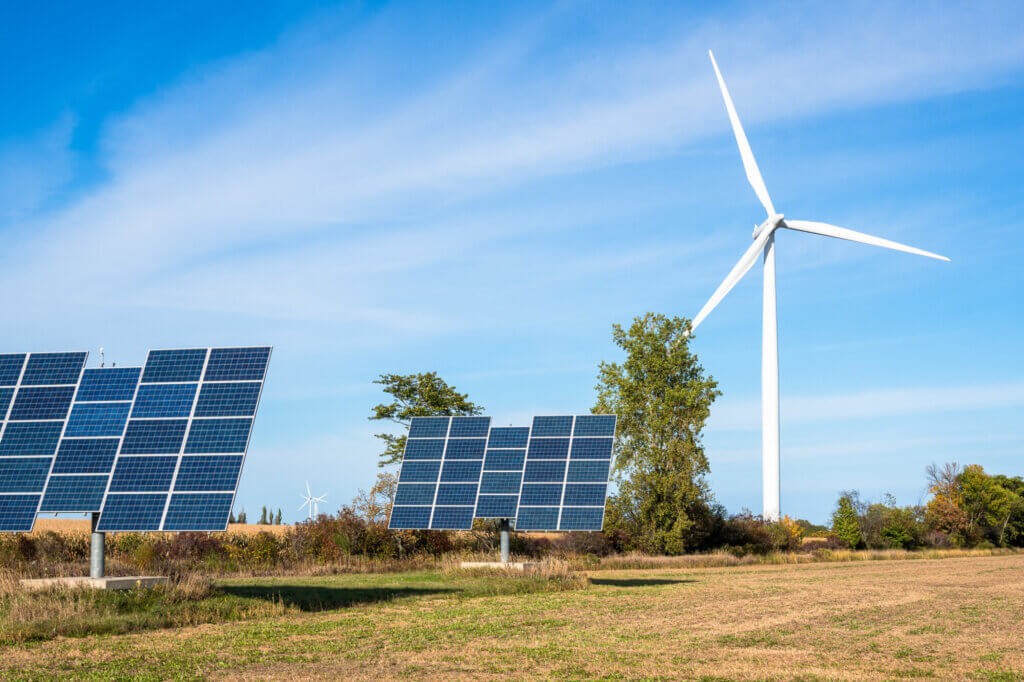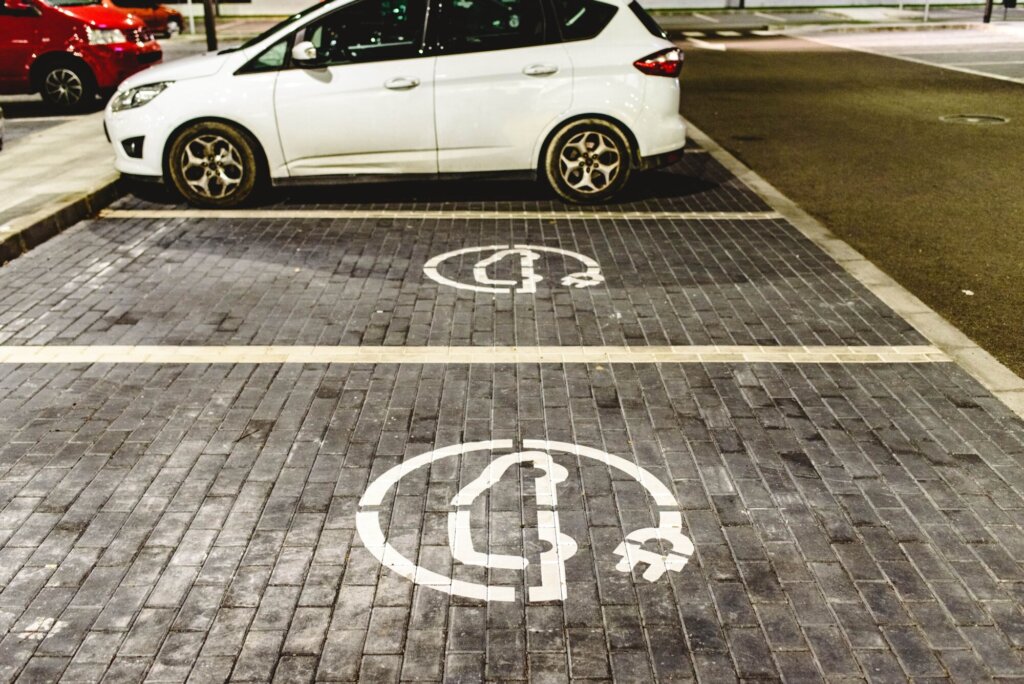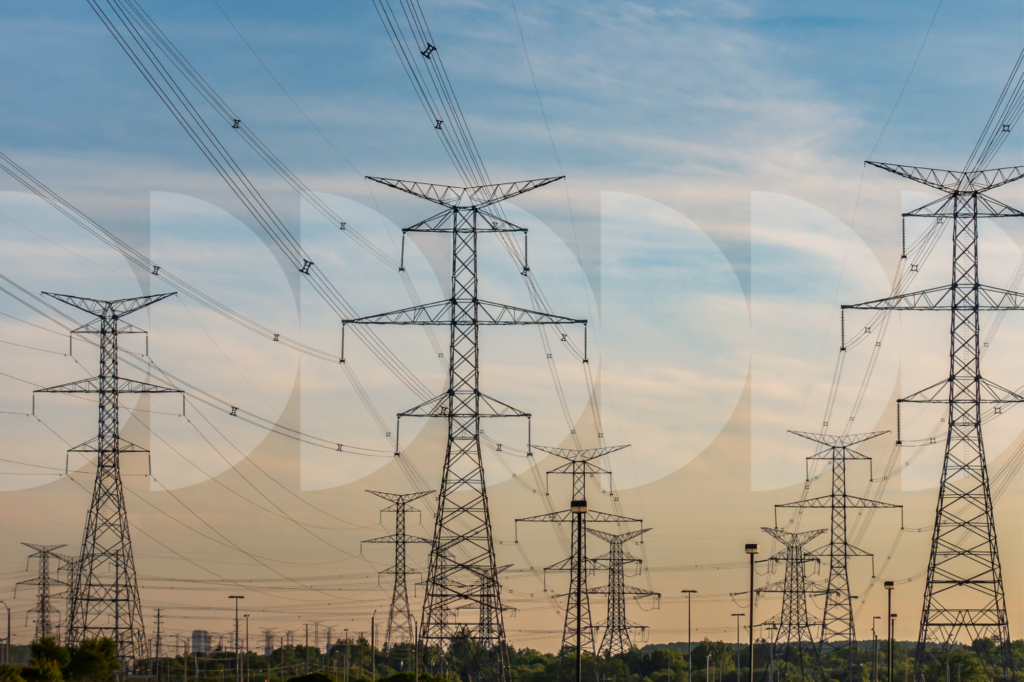From System Planning to Smart Chargers: Take-aways from our “Next 20” Webinar Series

Dunsky recently concluded its 20th anniversary webinar series “The Next 20” which explored the key technology, policy and market developments that we believe will have the biggest impact over the next two decades of the energy transition.
We were grateful to be joined by our clients from BC Hydro, the City of Vancouver, Metro Vancouver, Hydro-Québec and Énergir, who shared their perspectives and on-the-ground insights about how their organizations are driving change in the energy transition and how our collaboration supported some of these initiatives.
Below are summaries of each webinar, along with links to the webinar recordings and slide presentations.
Jump to:
The Next 20 in Mobility
This webinar featured insights from Dunsky’s mobility practice co-leads, Jeff Turner and Lindsay Wiginton, who discussed the anticipated evolution of clean mobility and how the sector is expected to adapt to new technologies, policy shifts, and sustainability targets. Specifically, the webinar covered:
Adoption Trends and Drivers
Favourable policies have boosted the adoption of electric vehicles (EVs) in recent years, and despite near-term market and political volatility that may impact pace and trajectory of adoption, long-term trends that support increased EV uptake remain positive. Hard-to-electrify vehicle segments are disappearing rapidly and technological improvements will continue to bolster the case for EV adoption.
Grid Impacts of EVs
Grid impacts related to increased EV adoption are real but there are factors working in utilities’ favour. The gradual pace of fleet turnover, the flexibility of EV loads and parallel efforts to reduce driving will give utilities more time to implement grid upgrades. In the near term, forecasting should be focused at the level distribution system level to give utilities a clearer sense of where to prioritize investments.
Managed charging is beginning to scale across utilities, and we should focus on aligning utility system benefits and end-user benefits in order to scale and optimize the potential of bi-directional charging to support the needs of the grid. Additionally, utilities will need to work proactively with corporate fleets to anticipate charging needs and streamline connection upgrade processes to avoid surprise step-load increases on the system as well as to avoid creating bottlenecks for fleets that are eager to electrify.
Charging Infrastructure Planning
Over the next 20 years, ensuring a robust network of public charging in densifying urban areas across North America will remain a key challenge. Adjusting policies and regulations to increase charging availability in multifamily housing should be prioritized as it will reduce the need for public charging. While cities are leading the way in installing public charging, major contributions from the private sector will be required. This will require supports to de-risk investments.
Finally, we discussed public charging with three of our clients from BC Hydro, the City of Vancouver and the region of Metro Vancouver. British Columbia is a leader in EV adoption, which is the result of (among other factors) supportive government policy and significant investment from the electric utility. Collaboration between BC Hydro and all levels of government in BC, including First Nations, has allowed the province to offer some of the most robust charging support, which has helped BC reach high levels of EV adoption relative to other North American jurisdictions.
Watch The Next 20 in Mobility webinar
The Next 20 in Buildings
In North America, buildings drive roughly one quarter of energy use and emissions. In Canada, over 90% of building emissions come from space and water heating. During our Buildings webinar we explored Clean Heat Planning as an analytical framework to assess building decarbonization pathways, and as a policy framework to develop strategies to achieve those pathways. Specifically, we covered:
Defining Clean Heat Planning
Clean heat planning provides a comprehensive and structured roadmap for reducing emissions within the built environment and that tailors decarbonization pathways to the unique context of each region, thus avoiding rigid “all-or-nothing” approaches.
For clean heat planning to be effective though, it must be comprehensive and granular:
- Covering all building segments — residential, commercial, and institutional — including those currently heated with fossil fuels as well as already-electrified buildings, which can help mitigate peak demand impacts when transitioning fossil-fuel-heated buildings.
- Considering all heating technologies, such as air-source and ground-source heat pumps and configurations, such as dual-fuel, with DR integration, and electric backups. Precise heat pump performance and peak impacts modelling is crucial as more jurisdictions shift to winter-peaking electricity demand.
- Incorporating key adoption drivers — studies have shown that cooling needs are a strong motivator for heat pump adoption, a factor that must be accounted for in projections.
Additionally, the planning process must account for the perspectives of various stakeholders, understanding that actors often act in their own interests rather than what’s best for the system or society.
Policy and Market Levers
Once there is alignment on where we are today and where we need to be, clean heat planning also offers a holistic perspective on the actions needed to achieve those decarbonization pathways. The strategies that shape clean heat planning vary by jurisdiction, but several core principles drive success. Fundamentally, a paradigm shift is needed—from a “help and hope” approach, where voluntary programs drive slow, incremental change, to a “mandate and support” model that accelerates transformation by setting clear requirements while providing the necessary resources to ensure compliance.
While leading jurisdictions have tailored their approach to local conditions, they all share common goals: setting clear targets, decarbonizing supply, supporting the adoption of clean fuel alternatives, and ensuring that the transition remains both affordable and equitable.
Real-World Insights
We heard from our clients at Hydro-Québec and Énergir, who shared insights on their utility-led collaboration in clean heat planning to advance decarbonization and affordability through a dual-fuel strategy. Their approach prioritizes electrification where practical while addressing grid capacity constraints. Dunsky is proud to have supported both Hydro-Québec and Énergir with this leading initiative.
Hydro-Québec emphasized its focus on demand management and continued investments in cold-climate heat pump programs to support widespread adoption.
Meanwhile, Énergir is evolving its role by integrating renewable natural gas into its network, with a target of 100% by 2040.
Both utilities stressed the importance of providing customers with clear guidance and incentives to transition to clean heat technologies, highlighting collaboration, flexibility, and tailored solutions as key drivers of success.
Watch The Next 20 in Buildings webinar
The Next 20 in Energy
Our Energy webinar focused on the electricity system and how it can meet the challenge of decarbonizing existing supply while expanding grid capacity to support electrification and load growth, affordably and reliably. We were also delighted to be joined by Joel Thibert, Vice President of Energy Planning & Strategy at Hydro-Québec, who shed light on Hydro-Québec’s approach to addressing the complex challenges of the energy transition.
Our team’s presentation focused on:
Load Growth Trends
The next 20 years will see significant growth in demand from numerous sources, including the electrification of transportation, buildings and industry, the rise of AI and data centers, industrial growth related to the energy transition (e.g., electric vehicle and battery manufacturers) as well as geopolitics and supply chain challenges driving onshoring and friendshoring trends. Growth in the use of clean fuels may also increase demands on the electricity system, depending on the production pathways pursued.
These trends will not only drive load growth but also lead to changing system dynamics. We will begin to see shifts in peak seasons (for example, a transition from summer- to winter-peaking) as well as an evolving peak window and system load shape (for example, a transition from single-peaking to dual-peaking patterns). Further, the distribution of these system-level impacts will be non-homogenous (across sub-stations, feeders), with more significant and/or imminent impacts experienced in certain pockets of the distribution system where the uptake of certain technologies may be concentrated.
Emerging best practices in load forecasting can better equip utilities to prepare for and respond to these challenges. This requires forecasts with right-sized temporal and spatial granularity and a holistic assessment of all emerging areas of load growth to fully capture changes in system dynamics, and understand how and where impacts will be distributed across system assets. Further, forecasts need to evaluate both unmitigated and mitigated load growth. While there is significant opportunity to leverage some of these emerging loads as distributed energy resources (DERs), we first need to understand where unmitigated load growth is heading, so that DERs can be properly valued and incorporated into planning processes.
Emerging Resources
Meeting future electricity demand will require more and different resources than we have traditionally relied on, but doing so will not be without challenges. A large portion of our grid infrastructure is aging, with many assets approaching the end of their useful life. More than 70% of transmission lines in North America are over 25 years old, and 115 GW of generation is expected to retire in the next decade. At the same time, over 85% of the new generation capacity in queues consists of variable resources—renewable energy projects that, while clean, raise new questions about reliability and flexibility.
We see three key three tools at our disposal to manage these challenges – distributed energy resources (DERs), long-duration storage (LDES) and clean fuels.
- DERs: DERs are sometimes viewed as a challenge to grid operations. But when viewed through the lens of system need, DERs become an increasingly essential solution—one that is cost-effective, quick-to-deploy, and right-sized. Utilities across North America are beginning to recognize this. In Ontario, for example, Dunsky supported Ontario’s Independent Electricity System Operator (IESO) in assessing how both front-of-the-meter and behind-the-meter DERs could help meet system needs in this decade. Our analysis found that DERs could reduce system peak demand by 5% to 15%, depending on the scenario. This shows the scale of the opportunity—if DERs are proactively planned for, enabled through markets, and supported through modernization investments.
- Long-Duration Storage (LDES): As variable renewables make up a larger share of the generation mix, LDES will play a critical role in ensuring reliability. These technologies can store energy over long periods and add flexibility to the system, helping manage periods of excess generation and shifting supply to periods of high demand. It offers planners an important hedge against supply risks, deployment delays, and forecasting uncertainty.
Yet LDES remains underrepresented in many system plans. Planning models often exclude or understate its contribution, and market structures tend to compensate long-duration capacity inadequately. LDES is also not one single technology, but a diverse portfolio, which can make evaluation more complex. Still, momentum is building. Jurisdictions like California, Ontario, and Australia are beginning to incorporate LDES into their system planning. - Clean Fuels: In certain conditions, fuels will continue to play a role in maintaining grid reliability—especially during extreme weather events or periods of system stress. Clean fuels, including low-carbon hydrogen, renewable natural gas, and other alternatives, offer firm capacity when other resources are constrained. These fuels may also help reduce pressure on the electricity system indirectly by enabling alternatives to electrification in select sectors. However, the benefits of clean fuels to the electricity system must be weighed against key limitations such as supply constraints from competition for these fuels across sectors and added electricity demand for the production of some of these fuels. A clear system and thoughtful planning should guide the use of clean fuels — one that considers their role, potential, and constraints within the broader energy system.
Planning Modernization
Traditional system planning frameworks were not designed for the pace and scale of transformation now underway. We see an increasing divergence between utility integrated resource plans (IRPs) and system planning efforts (informing shorter-term system investments) and energy and decarbonization pathways studies (used to inform long-term energy plans and policy at the economy-wide level). Even within system planning efforts, there is often misalignment between plans at different levels of the system (e.g., transmission/distribution), or between fuels (e.g., electricity/natural gas).
This divergence is driven by inconsistencies in scope, policy assumptions, timeline and scenarios. Average growth in electricity demand projected in utility IRPs is roughly half that of decarbonization pathways studies. There is also increasing uncertainty around the right mix of future resource build-out to meet growing demands as well as system reliability and operational constraints, which generally receive limited consideration in long-term pathways studies.
To meet the challenge of the energy transition, planning processes and approaches must evolve to meet emerging challenges of load growth, increasing reliance on renewable generation and storage, and trends towards more de-centralized systems.
To ensure planning can meet the moment, it should be:
- Multi-fuel (at a minimum consider electricity and gas, but ideally all fuels, and the interactions between them)
- Integrated, including all layers of planning – supply/generation, transmission and distribution
- Comprehensive, considering all demand and supply-side resources on equal footing
- Robust, utilizing scenario and risk-based analytics to incorporate uncertainty and ensure decisions remain effective across a range of possible outcomes
- Resilient, to enable reliable provision of electricity and quick recovery from extreme client-related events.
Finally, policy and market structures must align to enable this approach, ensuring that planning decisions reflect both immediate system needs and long-term decarbonization goals.
Watch The Next 20 in Energy webinar
The Next 20 in Québec
In this webinar focused on Québec, our President Philippe Dunsky engaged in a conversation with two leading figures in Quebec’s energy transition – Dave Rhéaume, Executive Vice President – Commercial Activities and Chief Customer Officer for Hydro-Quebec, and Stéphanie Trudeau, Executive Vice-President, Québec, for Énergir. Hydro-Québec and Énergir are, respectively, the province’s primary electric and gas utilities.
Québec is in a unique position relative to other jurisdictions. In addition to abundant hydroelectric power, it benefits from a broad societal consensus – one where different sectors of society agree that pursuing the energy transition is not a question of if, but of how to pursue it to provide Québec with the biggest economic, environmental and societal benefits.
Together, they discussed a wide range of topics including:
Strategic Ambition
Dave discussed Hydro-Québec’s $200 billion investment plan, which includes adding 11,000MW of capacity over the next 10 years, as well as Hydro-Québec’s objective to be a driver of collective wealth and competitiveness for Québec.
Stéphanie discussed Énergir’s commitment to decarbonization, such as the utility’s plans on energy efficiency (including a collaboration with Hydro-Québec to decarbonize the building sector), renewable natural gas and geothermal expansion.
Both gave examples of priority areas, such as industrial decarbonization (among others), where further work is required to create the right conditions for industrial clients to successfully save energy and decarbonize assets.
Geopolitical and Economic Context: a Hidden Opportunity for Québec?
The discussion acknowledged the current geopolitical and economic uncertainty — particularly developments in the U.S. related to climate policy and tariffs — and the risk of these dynamics slowing momentum in other North American jurisdictions.
But while some organizations may be reconsidering energy transition commitments, Hydro-Québec and Énergir stressed that they are moving forward with their plans and that long-term investment planning and energy infrastructure timelines require consistency beyond political cycles. Moreover, they noted that the slow-down in other jurisdictions, while a climate risk, may provide an opportunity for Québec to consolidate its leadership and have greater access to critical products that have long been in tight supply.
Navigating the Regulatory Environment: the Need for Speed
Infrastructure projects in Québec can face more regulatory delays than in other jurisdictions but there was optimism that this issue is now being recognized. The speakers emphasized that changes need to be made to speed up regulatory decisions and to allow more agility and flexibility for utilities and customers to proceed with decarbonization plans.
Panelists also discussed the risk that comes with regulatory uncertainty for project developers and that too many delays relative to other jurisdictions can derail certain projects altogether.
Other Topics: Skilled Labor and Social Acceptability of the Transition
The speakers also recognized other fundamental questions – including the economic and environmental costs of inaction, the critical role and need for more skilled labour to support the transition, and the need to better engage and communicate with the public about these major infrastructure projects and the benefits for Québec. We encourage you to watch the full video (available with sub-titles) to hear the full discussion.
Watch The Next 20 in Québec Webinar Recording
More Thought Leadership From Dunsky
We extend our sincere thanks to all the guest speakers and attendees who helped make our 20th anniversary webinar series a success. To stay informed about future webinars and insights from our team, we invite you to subscribe to our newsletter.
Related Insights
- Read more about Launch: Canada’s Renewable Energy Market Outlook: Wind. Solar. Storage
Launch: Canada’s Renewable Energy Market Outlook: Wind. Solar. Storage
August 1, 2025
Webinar Launch: Tuesday, September 16, 2025 Time: 1pm – 2pm ET Robust market intelligence to support decisions-makers The Market Opportunity…

- Read more about Charging in Sync: Coordinating EV Infrastructure in Multifamily Housing for Equitable Electrification
Charging in Sync: Coordinating EV Infrastructure in Multifamily Housing for Equitable Electrification
July 15, 2025
As EV adoption grows, uncoordinated charging in multifamily housing risks higher costs, grid strain, and inequitable access. This article makes…

- Read more about Webinar Summary – Energy Corridors: Expanding Interprovincial Electricity Transmission and Trade
Webinar Summary – Energy Corridors: Expanding Interprovincial Electricity Transmission and Trade
May 21, 2025
Original Air Date: Monday, June 16, 2025 In our recent webinar, Philippe Dunsky was joined by Mark Sidebottom (Chief Clean…
